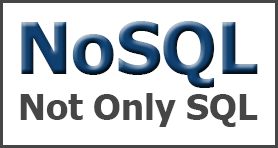| PPAS |
Installation, initial configuration, Hot-standby Streaming replication
Step 1:-- unzip the installation archive file.
Step 2:-- Make the installer directory your current
directory
Note 1:-- while installation when asked for either an
oracle or postgresql installation select oracle will give you all of the oracle
performance and scability features not found in community postgreSQL.
Note 2:-- Enter the password for the database super
user. Be sure remember this you will need the password later.
Install the PPAS on both the primary and secondary
server.
On primary server
Installation
directory :/opt/PostgresPlus/9.2AS
Data Directory : /opt/PostgrePlus/9.2AS/data
WAL Directory : /opt/PostgresPlus/9.2AS/data/pg_xlog
Database port
:5444
Database
Superuser : enterprisedb
Operating System Account: enterprisedb
Database
Service :ppas-9.2
Pg_bouncer: 6432
On secondary server
Installation directory: /opt/PostgresPlus/9.2AS
Data Directory: /opt/PostgrePlus/9.2AS/data
WAL Directory: /opt/PostgresPlus/9.2AS/data/pg_xlog
Database port
:5445
Database
Superuser : enterprisedb
Operating System Account: eEnterprise
Database
Service :ppas-9.2
Pg_bouncer: 6432
Step 3 :--Make changes in the primary server
open the Postgresql.conf configuration file and modify
it
#vim /opt/PostgrePlus/9.2AS/data/postgresql.conf
listen_addresses
= '*'
wal_level = hot_standby
max_wal_senders = 1
wal_keep_segments = 5
rchive_mode = on
archive_command = 'cp %p "/opt/archive/%f"'
step 4: Create an archive directory under the opt
step 5:--change the pg_hba.conf file
#vim pg_hba.conf
host
replication repuser Secondary-Server-IP/32 trust
step 6:-- make changes in the stand by
server
change in the postgresql.conf file
#vim /opt/PostgrePlus/9.2AS/data/postgresql.conf
hot_standby = on
step 7:--copy recovery.conf.sample as recovery.conf
#cp /opt/PostgresPlus/9.2AS/share/recovery.conf.sample /opt/PostgresPlus/9.2AS/data/recovery.conf
#vim /opt/PostgresPlus/9.2AS/data/recovery.conf
standby_mode = on
primary_conninfo = 'host=Primary-Server-IP port=5444 user=repuser password=admin'
restore_command = 'cp /opt/archive/%f %p'
step 8:-- Create an archive directory in the opt.
step 9:-- Create a replication user as repuser and
password
connecting to
the database
#cd /opt/PostgresPlus/9.2AS/bin
#./psql -U
(username) -d (database name)
edb=#create user repuser with replication password ’**password**’;
(creating a user in the database)
edb=#select pg_start_backup(‘base
backup’)
Meanwhile we need copy all the content of dats
directory from primary to secondary .
#cd /opt/PostgresPlus/9.2AS/data
#rsync –av
--exclude pg_xlog --exclude postgresql.conf --exclude postmaster.pid . Primary-Server-IP:/opt/PostgresPlus/9.2AS/data
Edb=#select
pg_stop_backup();
Step 10:--
connect to the database and run the following command to see the current
wal location(on the primary server)
edb=#SELECT
pg_current_xlog_location();(to see the current wal location)
edb=#select * from pg_stat_replication;(to check the
status of replication)
step 11:-- connect to the database and u can run (on
the standby server)
edb=#SELECT
pg_last_xlog_receive_location();
edb=#SELECT pg_last_xlog_replay_location();

